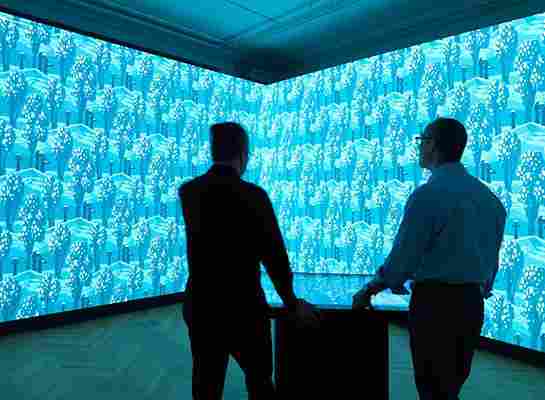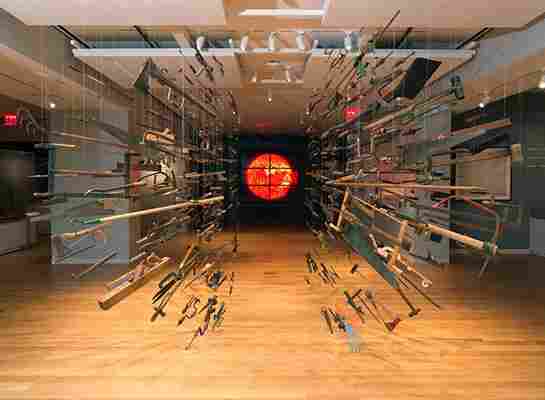On Friday New York’s Cooper Hewitt, Smithsonian Design Museum will reopen and reveal the results of a three-year, $91 million renovation of its home, the Carnegie Mansion. But the changes to the museum are far from just cosmetic. The transformation also includes new interactive technologies, from high-definition touch-screen tables that can be used to explore the collection to the Immersion Room, which lets visitors experience the wallpaper collection (America’s largest, by the way) at full scale.
“We are a museum of design, and we recruited a dream team of designers to develop the new Cooper Hewitt,” director Caroline Baumann said at a preview event on Tuesday. The roster includes 13 design firms, which collaborated on every aspect of the museum, from system upgrades and exhibition displays to graphic identity and more. Gluckman Mayner Architects expanded the exhibition space sixfold (including a new 6,000-square-foot gallery on the third floor), improved circulation through the spaces, and designed unobtrusive mechanical, lighting, and electrical updates. Beyer Blinder Belle Architects & Planners guided the restoration and helped integrate new technology without changing the character of the 1902 building. Diller Scofidio + Renfro developed new modular displays (fabricated by Goppion), a new entry canopy on 90th Street, illuminated piers on Fifth Avenue, and the design for Shop Cooper Hewitt.

The transformation extends all the way to the institution’s name, which is now Cooper Hewitt, Smithsonian Design Museum (changed from Cooper Hewitt, National Design Museum). Pentagram created a visual identity befitting an organization entering a new era and called on type designer Chester Jenkins of Village to make a custom, open-source typeface, which can be downloaded for free from cooperhewitrg .
The museum’s curators are taking advantage of the extra room with ten exhibitions and installations. “We gave them a relatively flexible exhibition space [on the third floor], which allows the historic spaces on floors one and two to be present and protected,” said architect Richard Gluckman. “Over the years there was sometimes a tortured relationship between the scale of the object or the display apparatus and how they intervened into the historic space. But now the building is more flexible, and large-scale installations can be done.”

And there’s still plenty to come. The revitalized garden by Hood Design will debut in 2015, and the pièce de résistance of the new interactive capabilities, the Pen, will be available in early 2015. The Pen is a stylus that will allow visitors to interact with exhibition signage and the touch-screen tables to learn more about individual objects, as well as collect and save their favorites and their own designs, which can be accessed from a unique Web address printed on their entrance ticket.
Cooper Hewitt, Smithsonian Design Museum, 2 East 91st Street, New York; cooperhewitrg
* *
